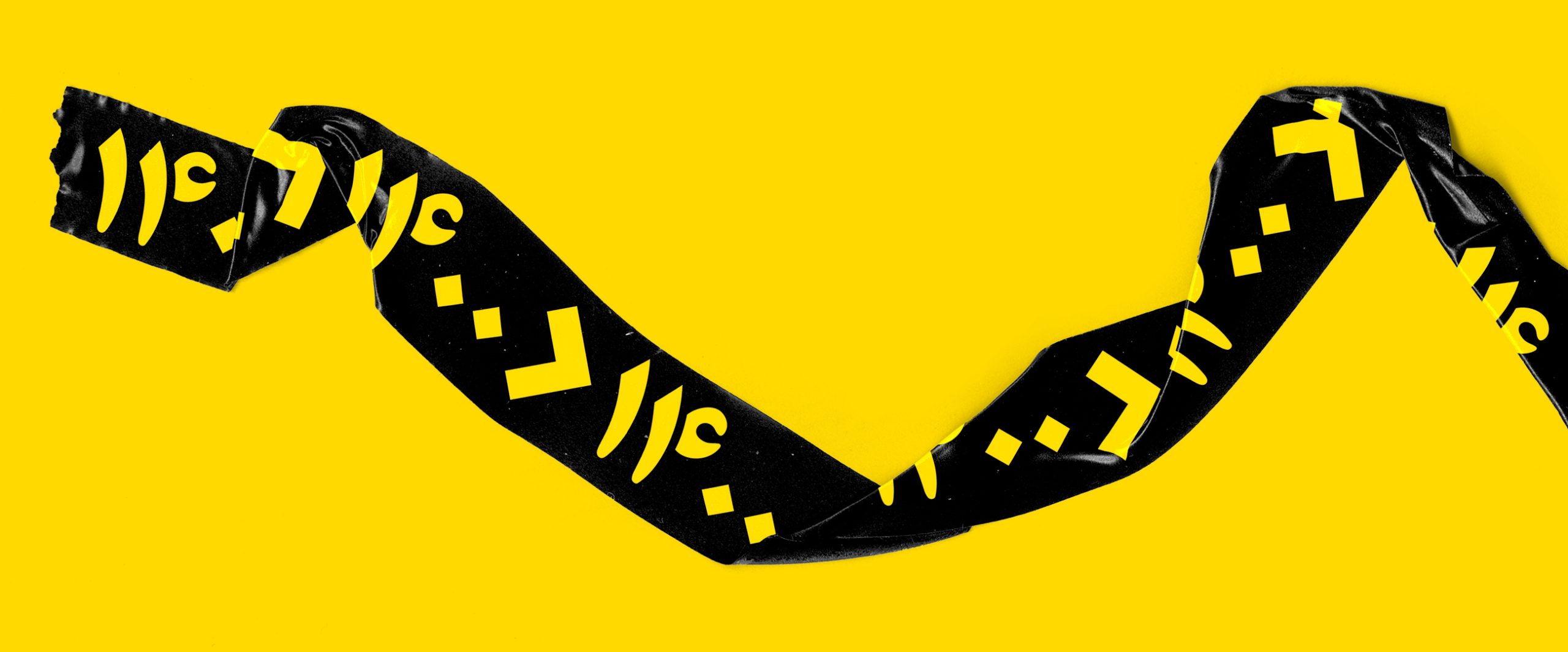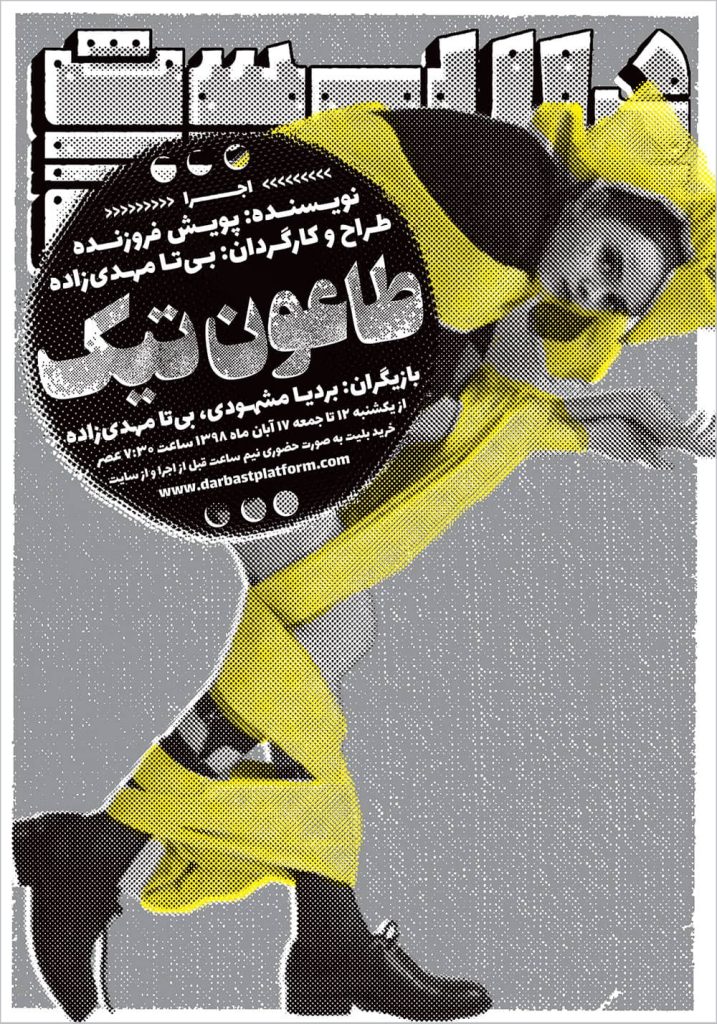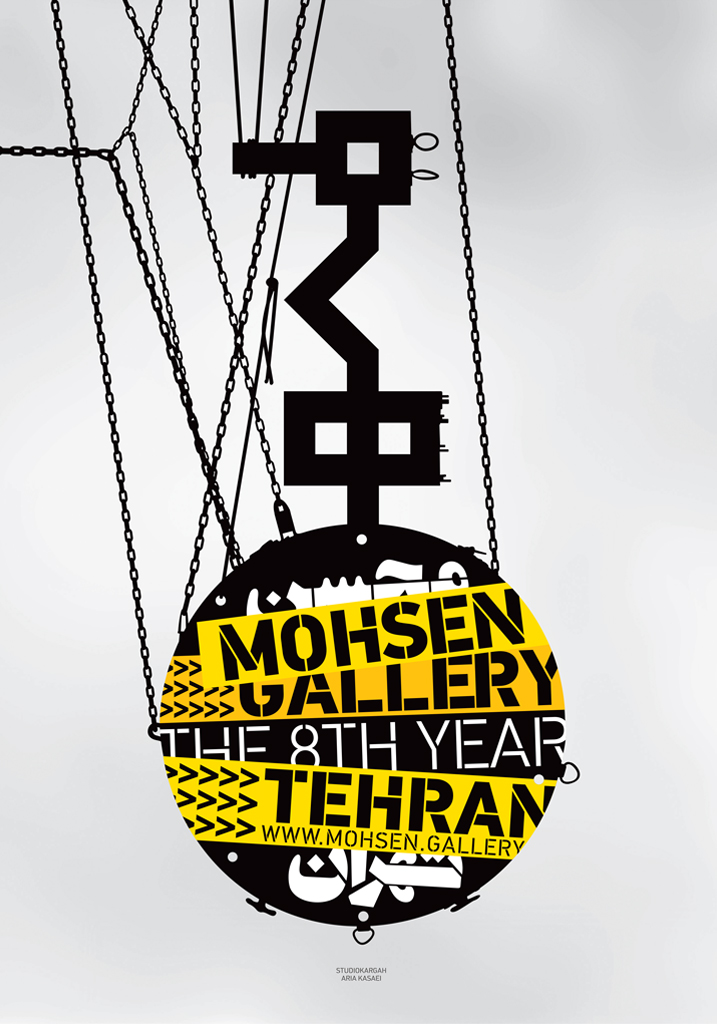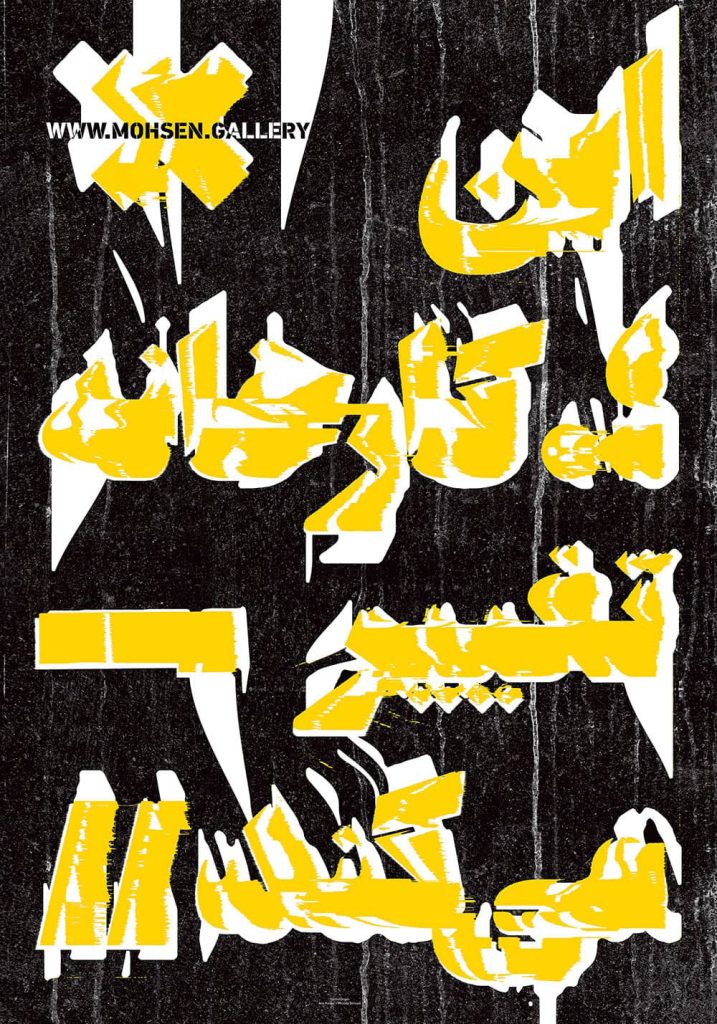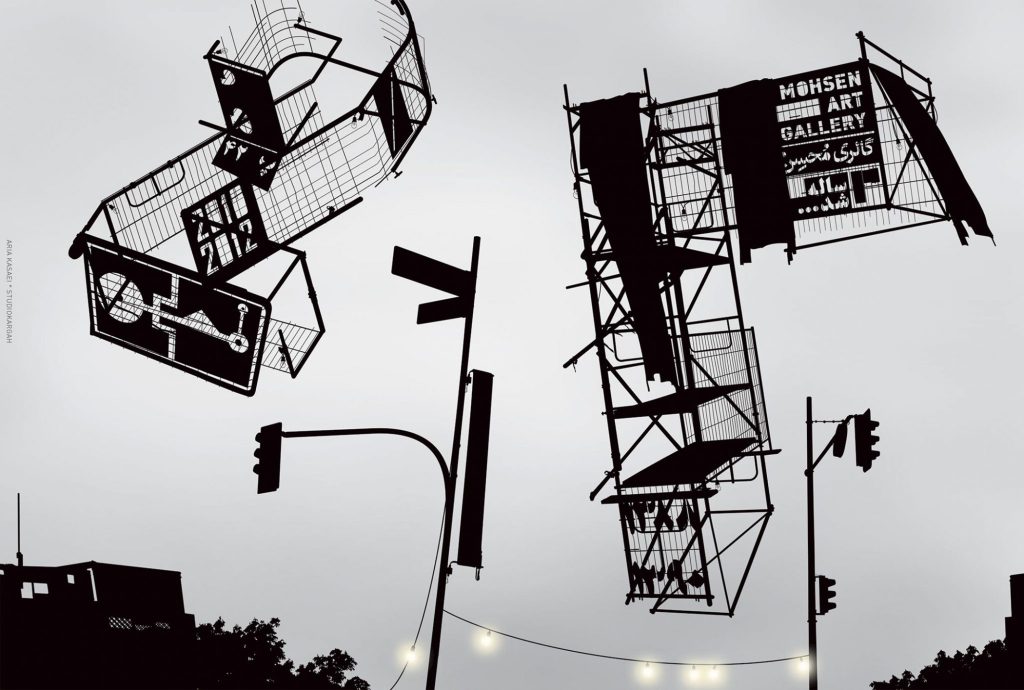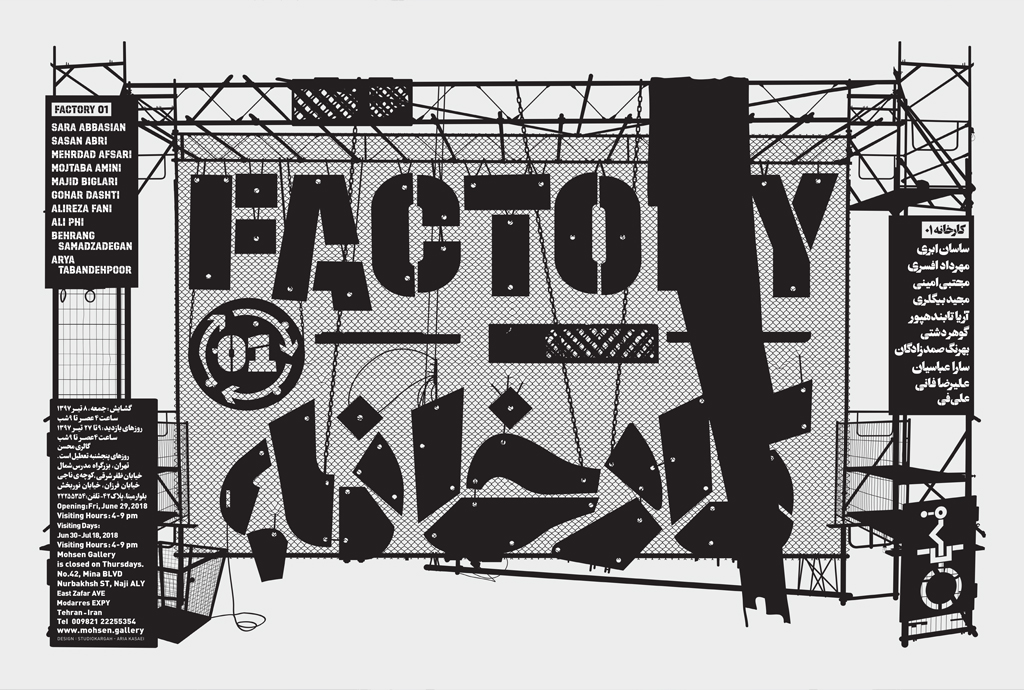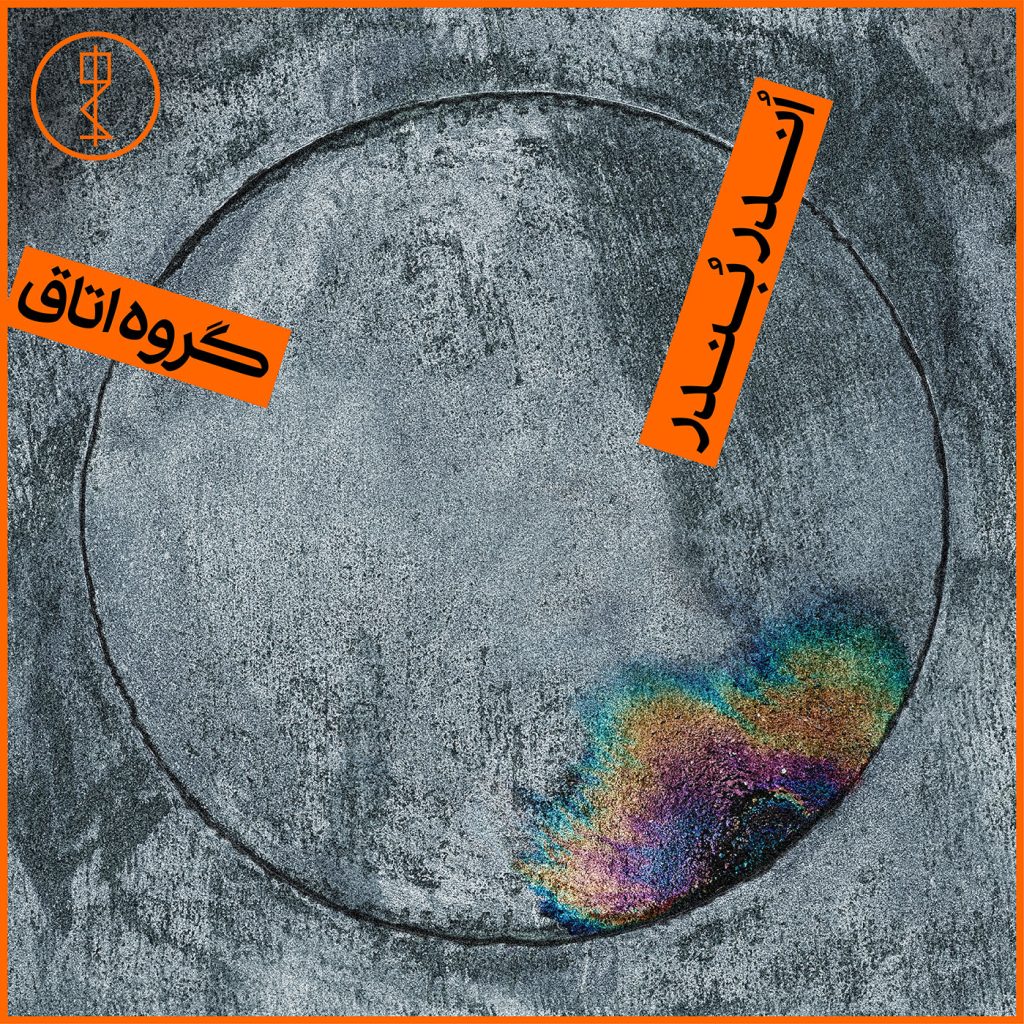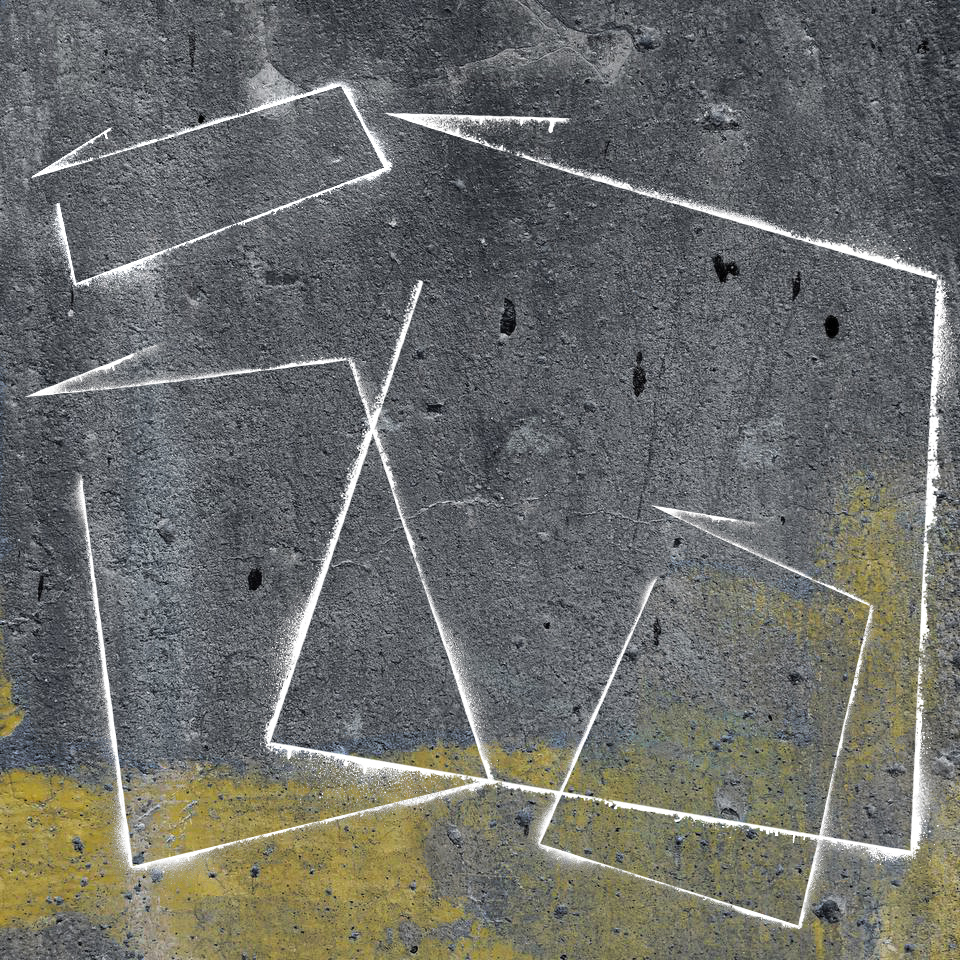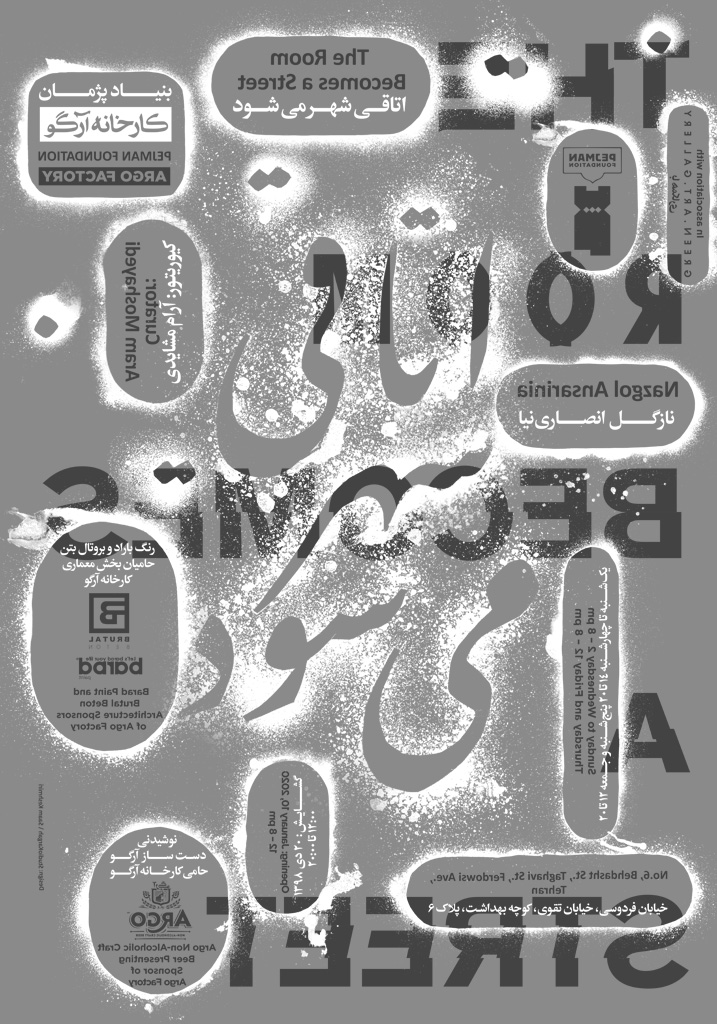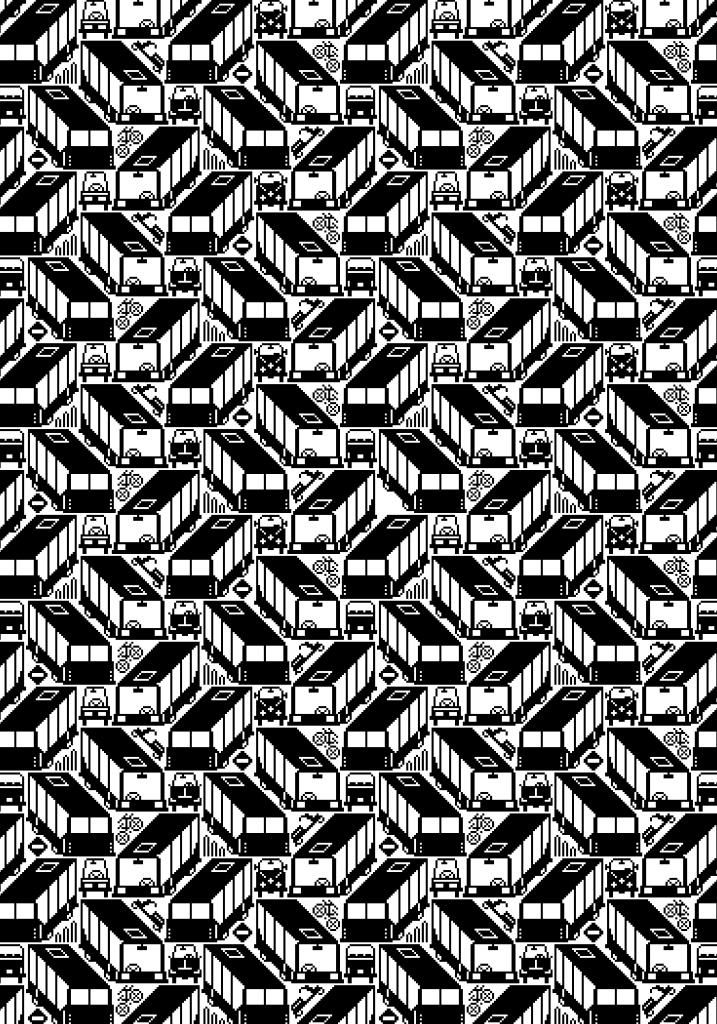Tehran
Text by Maryam Razi
You cannot pass the same route two times in Tehran, for Tehran is ceaselessly changing. Always in transformation, Tehran is constantly formed and deformed, raised and ruined, developed and deteriorated. Anyway, Tehran is a bountiful megalopolis, as anyone who takes the time to associate with it would come to realize.
Over the years, Tehran and its visual details have formed the basis of quite a few projects at Kargah. The city of Tehran, its stories, and its paradoxical and multifaceted shape, have been among our raw, and at times ready-made, materials and solutions in Kargah, where we have inquired into the ways of translating urban landscapes and our contemporary social situation into the visual language of graphic design.
Since 2010, exploring Tehran and research about its various layers by way of documentation and formal mimesis has been an ongoing project at Kargah, as well as a source of inspiration and a means of design. Right from the beginning, the designer has been assisted by digital cameras and, later on, smartphones, in order to materialize the idea of translating the language of the city into a visual language.
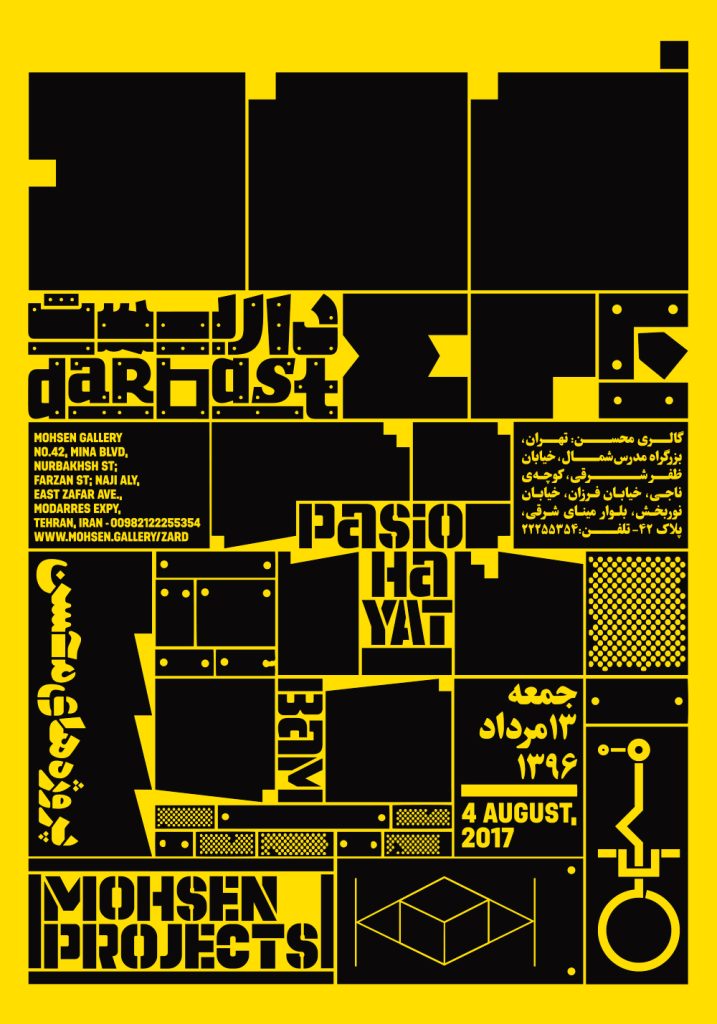
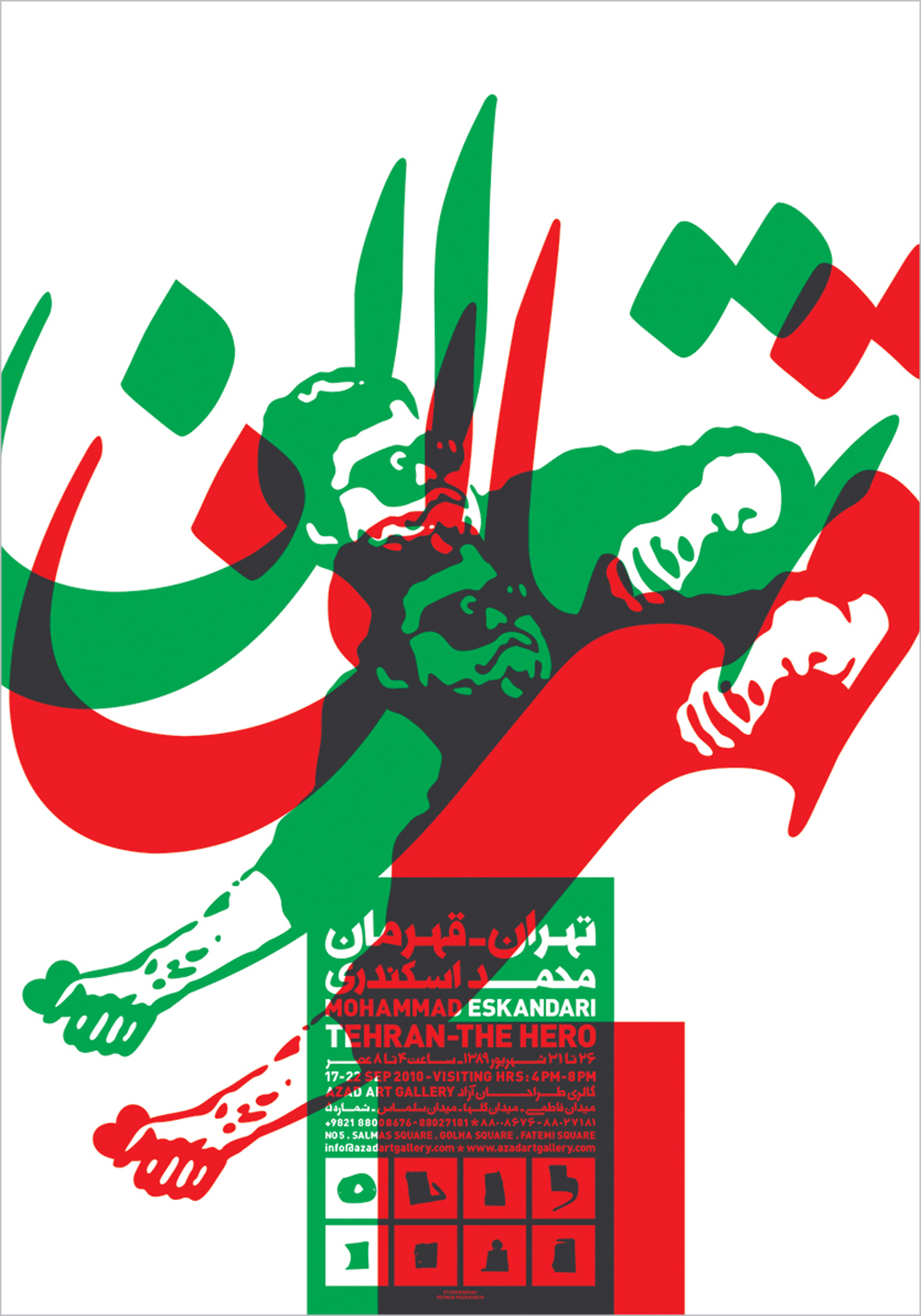
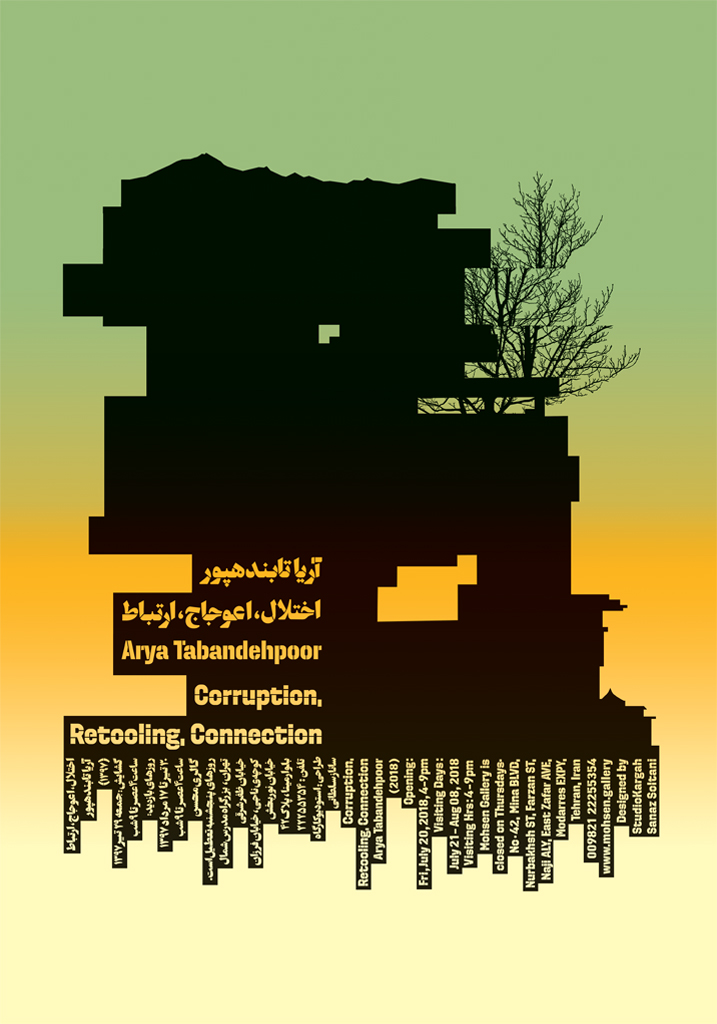
These gadgets that have come to replace the designer’s notebook, enable one to take several photos of various urban subjects in a moment’s notice. Wandering about the city and photographing its details while paying attention to its insignificant and decaying elements, gradually developed into a conspicuous and viable source of inspiration. At the same time, this method of documentation was pregnant with a narrative language – itself potentially a means of graphic design – that lay beneath the wholes and parts of the photographed structures: the signboard of a abondoned shop, gray sky right before sundown, rundown fences and roller shutters, crooked neons, giangantic structures of unfinished skyscrapers, billboards, and a plethora of meandering cables and dried branches that turn up in almost every photo.
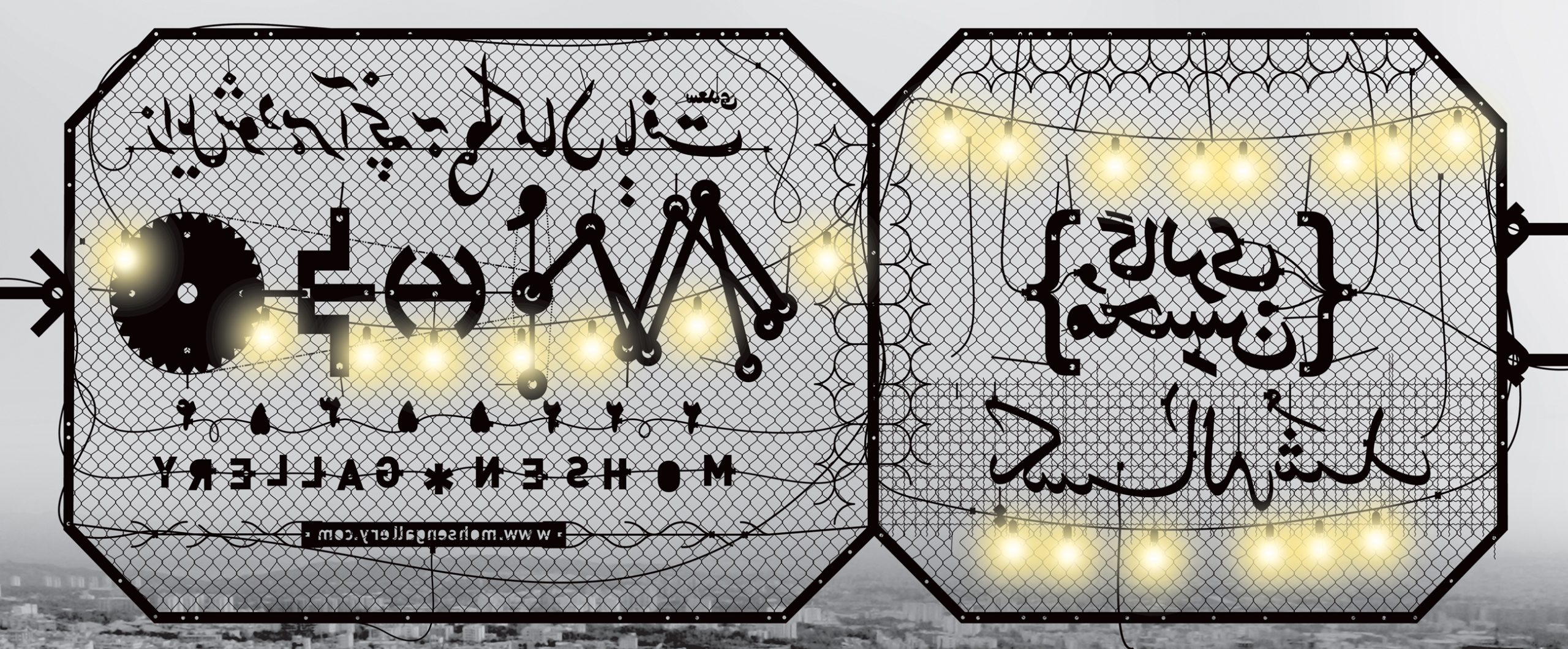
The common visual parlance of the city was transformed into graphic forms that showed the same features, both literally and metaphorically. Graphic design, in this process, was gradually transformed into urban mimesis.
The results of such urban mimesis have their own autonomous and independent spirit. Their expression is particular and local: bespeaking the geography wherefrom they have arrived, they evince a certain light particular to Tehran.
The graphic design inspired by the city does not speak an urbane, clear, language, nor does it have an uptight, polite, form. Tehran is an ever-changing, multilayered, multifaceted, multilingual, and multicultural city, and any form of graphic design rooted in Tehran cannot be but multilayered, paradoxical, and composite. Urban landscapes in Tehran create discordant combinations of reconstruction and ruination, function and dysfunction, and when transformed into means of graphic design, they result in collage-like images of order and disorder, and light and darkness.
Thus the structure of the city gives way to graphic identity. Such a multilayered urban interactive composite of various elements, phenomena, and languages, has given Tehran a plural identity. Just as one is in need of different moods to survive this city.
In addition, Tehran is also a colossal collage of the irreconcilable tastes of its citizens and this has made it further confounding. When all this is translated into a visual language, graphic design becomes busy and noisy.
Surveying Tehran and studying it from head to toe as an ongoing project of graphic design as urban mimesis, breathes and grows next to Studio Kargah, and is immensely influenced by the time-space between leaving home and entering studio.
